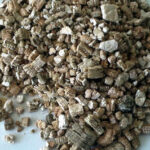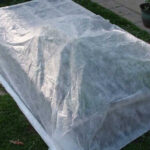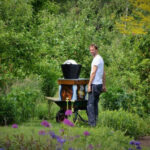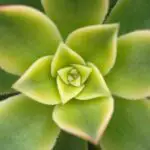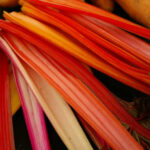I love growing basil (Ocimum basilicum)! It’s one of those highly rewarding spring and summer garden endeavors that never fails to disappoint. If a bush develops from a single plant, I’ll have access to basil through parts of fall too.
Basil is definitely number one in my book. One of the oldest known herbs, basil has an entertaining background and multiple uses in cuisine and wellness. It’s perfect for cold salads, cooked pastas, and meats alike. There’s nothing like basil-infused olive oil. And it’s prolific in the right conditions!
Not convinced that basil plants should be a part of your gardening life? Read on to learn what it is, why you should grow it, and everything you need to know to grow basil successfully.
Listen to this post on the Epic Gardening Podcast
Subscribe to the Epic Gardening Podcast on iTunes
Basil: Quick Care Guide
| Common Name | Basil, royal herb, St. Joseph’s Wort, Thai basil, Genovese basil, Greek basil, Italian basil, Holy basil, and a wide range of variety names |
| Scientific Name | Ocimum basilicum |
| Days to Harvest | Around 75 days depending on variety |
| Light | Full sun, 6-8 hours per day. |
| Water | Keep the soil moist, but not wet |
| Soil | Nutrient-rich, well-draining soil |
| Fertilizer | Compost, blood meal & cottonseed meal before planting |
| Pests | Aprids, flea beetles, spider mites, whiteflies, Japanese beetles, grasshoppers, slugs, snails |
| Diseases | Leaf spot disease, Cercospora leaf spot, Fusarium wilt, Powdery mildew, Downy mildew |
All About Basil
Basil (Ocimum basilicum) is an aromatic herb from the mint family, sometimes referred to as the “royal herb”. Its name derives from the Greek word for king, “basileios”. Scientifically known as Ocimum basilicum, it’s also known as St. Joseph’s Wort. Originating in Thailand and India, basil plants are part of ayurvedic medicine and culinary endeavors. People in Rome believed it caused madness in men. Ancient Greeks thought basil was a plant linked to hatred, and that it must be planted while yelling at the seeds to force them to grow.
In the island nation of Haiti, store owners steep basil in water and sprinkle the water around their stores to ward off evil spirits. In rural areas of Mexico and in part of Italy, it became a love charm of sorts, with the power to attract a partner or keep one faithful. Amongst Christians, it’s believed basil plants sprang from the ground at the site of the crucifixion.
Basil’s interesting history could be a good enough reason to include it in your gardening repertoire. It has many uses in cooking and benefits for your health. It would be handy to have a window box in the kitchen or a spot in the yard where you can clip what you need the moment you need it. Simply mix with some olive oil and you’ve got an aromatic seasoning.
Health fanatics shout praises for basil’s antioxidant, anti-inflammatory, and anti-bacterial properties. Nutritionally, it’s chock full of vitamin K, A, and flavonoids. Best of all, it tastes great in salads, soups, sandwiches, many ethnic cuisines, and on its own. And it’s rather easy to grow, too!
Recommended Basil Varieties
Some say there may be as many as 150 varieties of basil (Ocimum basilicum)! That’s a whole lot of basil, and there’s no way we can cover them all in one piece. If you can’t pick one, try an Organic Basil Variety Mix. So, with that in mind, here’s 25 of the most popular basil varieties separated out by category.
Greek Basils
- Piccolino: Densely-packed dwarf Greek basil variety that forms a mounded or domed plant mass.
- Corsican: Mediterranean basil variety with mottled purple and green leaves. Sweet, mild flavor.
Genovese Basils
- Genovese: A perfect olive oil pesto basil, this garden standard produces large basil leaves and can grow up to 2 feet tall.
- Eleonora: A Genovese-type basil which was bred specifically to be resistant to downy mildew. Rapid growing.
- Amethyst: The only true purple-hued Genovese-type basil, featuring large 2-3″ wide leaves. So dark it’s almost black.
Italian Basils
- Sweet Basil: Sometimes referred to as common basil, sweet basil is one of the most popular basil varieties for cooking.
- Mammoth Sweet Basil: A popular Italian, large-leaved version of the common basil or sweet basil. Yellow-green leaves.
- Red Rubin: An Italian large-leaf type of basil, this variety has distinctively dark purple, flat leaves tinged with copper.
- Mammolo: Practically perfect for container growth with a large leaf-to-stem ratio. True Italian basil flavor.
Thai Basils
- Thai Basil: A true Thai basil with a sweet, anise-and-clove flavor. Green leaves, purple basil stems with purple flowers.
- Red Leaf Holy Basil: Thai style of basil with pointed green leaves with purplish tinges. Flavor is described as musky and clove-like.
- Purple Ruffles: Distinctively frilly leaves with a flavor stronger than sweet basil, but milder than most Thai varieties.
- Green Leaf Holy Basil: Used in Ayurvedic medicine, and also known as tulsi. Strong clove-like, musky scent.
- Siam Queen: A very popular Thai sweet variety with an intense licorice and basil aroma and taste.
Flavored Basils
- Cinnamon: Small to medium dark green leaves, reddish stems, purple flowers. Has a scent and taste reminiscent of cinnamon.
- Blue Spice: Slightly vanilla-tinged with a strong basil aroma. Often used in teas. Light purple flowers, uniform growth.
- Licorice: Green leaved with purple accents. Distinctively licorice-like flavor that is strong, but tasty.
- Lemon Basil: Intensely basil flavor with a hint of lemon. Lemon basil is perfect for many culinary purposes.
- Lime: This can be used as a lemongrass substitute! Rich lime and basil flavor which works well in Asian cooking.
- Christmas: Aroma and taste of mulled wine with a hint of pine, overlaid on a classic Thai basil spiciness.
Other Basils
- Pesto Perpetuo: Green leaves with white edges. Has a strong basil character with just the slightest hint of lemon.
- Eritrean: Strong-scented basil from Africa, slightly spicy. Produces flowers that range from cream to pink.
- Dark Opal Purple: An heirloom basil with very fragrant dark purple leaves. Good for small container gardens.
- Lettuce Leaf: A Japanese basil that grows extremely large 3-5″ leaves. Mild, but true basil flavor.
- Red Velvet Leaf: Deeply-red colored leaves, strongly aromatic. Continuous leaf production throughout the season.
Planting Basil
Basil is a warm weather-loving plant, so wait until 2 weeks after the last frost before you plant basil plants outdoors. For a jump start, plant basil seeds indoors six weeks before last frost. They will germinate quicker if the soil is warm. Choose a place where it will get six to eight hours a day, with a little afternoon shade.
If you container-grow basil indoors, a sunny window is a wonderful spot. Or grow basil plants in a container outdoors. Try the Root Pouch grow bags, Air Pots, or tiered GreenStalk planters we stock in our online store.
Allow at least 10 to 12 inches of space between each plant and plant basil about one quarter-inch deep in warm soil. You will get the best results if the soil is approximately 70 degrees and moist.
How To Care For Basil
Basil is not a complicated herb. There are only a few basic requirements to help it thrive, making it a good choice for beginning gardeners. Now that you’re done planting basil, let’s talk basil care.
Light and Temperature
Six to eight hours of full sun per day is optimal for growth of your basil plants. In warmer climates like the south or southwestern parts of the United States, some afternoon shade is welcome. The hotter the weather, the more likely it is your plants will suffer from sunburn or wilt problems. In the peak of the summer, they might appreciate a shade cloth during the hottest time of day!
Basil is not a cold-loving plant. The lowest temperature it will tolerate is around 50 degrees Fahrenheit. It much prefers weather between 60-80 degrees, and thrives in that range. In the cooler fall months or the wintertime, bring your basil indoors.
Water and Humidity
Keeping the soil moist is best for basil plants. Adding a layer of mulch keeps water from evaporating too quickly. This is especially helpful in container gardening, where the heat can dry things up much faster in a smaller amount of soil. Consider a larger pot or a self-watering pot if the weather gets really warm. Though basil may like moisture, well-draining soil is still a must.
Soil
Your basil plants need rich and nutrient-dense, but well-draining soil. Before planting, blend some compost thoroughly into your soil, along with a bit of blood meal or cottonseed meal. Basil likes moist soil, but not soggy soil. No mud puddles for this herb! The best soil pH for basil is between 6 and 7.
Fertilizing Basil
If your soil is prepared properly, you shouldn’t need to apply fertilizer during the growing season. By adding blood meal or cottonseed meal to your soil before planting, you’re offering the plant plenty of slow-release nitrogen to produce leafy growth. Do not over-fertilize your basil plants, as this diminishes taste and aroma of your basil significantly. That pre-preparation of your soil should be plenty!
Basil Propagation
Basil can be propagated either from seed or from cuttings. When propagating from cuttings, cut a 4-6″ long segment of basil that has not yet flowered. Place it into a glass of water or your preferred cutting medium (perlite or damp potting soil are great choices). It should produce roots within a week, and can then be transplanted into the garden.
Harvesting seed is a bit trickier. You see, basil has the tendency to cross-pollinate easily. If you’re harvesting your own seeds, keep different varieties separated by at least 150 feet. Otherwise, you may have unexpected results!
When your basil goes to seed, it will put up a tall stalk with flowers on it. Leave it alone until it has developed pods that are turning brown. At that point, remove the stalk, separate the pods, and leave them to dry out on cookie sheet lined with parchment paper in a warm and dry location for at least a week. They should look like the dried pod shown above.
Once they are fully dry, carefully pick up the parchment paper and place the pods and any escaped seeds into a paper bag. Close it to prevent seeds from escaping and shake the bag vigorously. This will knock out most of the seeds. Then, take a rolling pin and crush the remaining pods through the paper bag.
Carefully pour the crushed pods and seeds back onto the tray and very gently blow off the pod chaff. This should separate most of the larger pod fragments from your seeds. Store your seeds in a dry container with a moisture-absorbing packet, or alternately place them into a paper envelope and then into some dry location.
Pruning Basil
Even if you don’t need basil right then, you need to regularly prune your basil. Regular pinching off of growth encourages new leaves. Ideally, prune from the newest growth, leaving the older stem in place. Pinch off or snip at the growth point of two leaves. Never remove more than 2/3rds of a plant at a time.
Here’s a great video which will show you exactly how to prune your basil for the best results!
Harvesting and Storing Basil
And now the time you’ve been waiting for: how to harvest basil! When all your hard work and tender loving care pays off in delicious dividends. Hold off on those clippers, though, until you digest the following information.
Harvesting Basil
Harvest basil when the plant has produced at least six leaves and it’s at least 6 to 8 inches tall. For the best flavor, only take what you need when you need it, or when your scheduled regular pruning is supposed to occur. Just before the plant flowers is the most flavorful time, but flowering will stop the growing process. If flower buds form early, pinch them off.
Storing Basil
You can either freeze your fresh basil leaves whole inside a sealed plastic bag, or chop them up. If you opt to chop, pack the fresh basil leaves into an ice cube tray with just a tiny bit of water to hold them together, and freeze them solid. Then, remove your basil cubes from the ice tray and place them into a sealed plastic freezer bag until you need them.
Dried basil is only about a third as pungent as fresh basil is, but it can still be extremely useful. Many people like to hang-dry herbs by tying the stems tightly together in bunches and then placing them in a cool, dark area until they crumble to the touch. Or make a drying frame out of some superfine window screen and scrap wood, and lay your basil on that to dry in a dark place.
The goal when drying your basil is to ensure that it has plenty of airflow around it while it dries. If there’s a lack of airflow, or the area is humid, you may end up with mold, and that will destroy your basil. Some people have success with dehydrating or freeze-drying basil leaves as well. If you have access to a freeze-dryer or dehydrator, you might want to experiment with those options.
If in doubt, you can always take that abundance of basil you have left, make up a batch of pesto with fresh basil, and freeze that. You’ll then have a garden-fresh basil pasta sauce ready to use whenever you want it!
Troubleshooting
Most of the time, basil is easy to care for. But what happens if pests invade, or a disease takes hold? Let’s go over your options.
Growing Problems
If there’s no signs of pest or disease damage, but your plant’s leaves are beginning to yellow and it’s showing poor growth, it may be a sign of nitrogen deficiency. At that point, use a balanced or slightly-high nitrogen organic liquid fertilizer to try to spur some growth. If it perks up within a couple days, you’ll know that you did the right thing.
Pests
Aphids are one of the most common basil pests. Flea beetles also find basil tasty. I recommend using neem oil to combat these little sap-suckers. Spray all plant surfaces thoroughly: tops and bottoms of the leaves, the stems, even the flowers. You can also use diatomaceous earth as a preventative before these two pests can strike.
Spider mites and whiteflies may also try to attack your basil for its juicy plant sap. Like aphids and flea beetles, give your basil a thorough coating of neem oil to deter these pests or kill off those that are already present.
Japanese beetles rapidly skeletonize the leaves of your basil plant. Grasshoppers eat holes in your leaves too! The best prevention against these hungry pests is to deny them access to your plants at all. Use floating row covers to keep them at bay. If they still make it to your plants, a bit of neem oil will disrupt insect growth. Hand-pick them off and dispose of them.
Both slugs and snails happily feast on your basil bounty, and while they’re at it, they’ll leave nasty slime trails. A snail & slug bait will help keep these creeping menaces at bay. Dusting diatomaceous earth over your plants will also discourage them from nibbling. With a little effort, you can protect your basil so it doesn’t start showing signs of holes like these.
Diseases
Leaf spot is a bacterial infection that displays as streaked stems and black or brown spots that appear water-soaked. Not much can be done about it other than removing and destroying affected leaves. Humidity and watering from overhead exacerbate the problem. Leaving some room around each of your plants will circulate more air and keep leaves dry.
Cercospora leaf spot, on the other hand, is caused by a fungus. This causes brown and irregular spotting on the leaves. Use drip irrigation and mulch around the plants to keep the leaves dry. Remove any leaves damaged by this fungus. Use a blend of baking soda and insecticidal soap to act as a fungicide for this disease.
Fusarium wilt is particularly dangerous to sweet basil, but can be a problem for all basil varieties. This annoying disease causes stunted growth, yellowing, brown streaks, and wilting. Unfortunately, once a plant contracts fusarium wilt, it should be destroyed. As this disease travels through infected soil, avoid planting at-risk plants in that soil for at least a few years.
Finally, both powdery mildew and downy mildew can strike. While there are varieties of basil plants that are resistant to mildews, not all types are. You can treat these with neem oil, but it may take time to repair the damage done to your plants. Leaves that have been severely hit with these mildews should be disposed of.
Frequently Asked Questions
Q: When harvesting, where is the best place to pick from on a basil plant?
A: Always start at the top. Cutting the younger parts of a plant will ensure you continue to grow basil, while older areas may not grow back.
Q: Can I try growing basil in a pot indoors during the winter?
A: Absolutely! Your chances are good if you have a window space that’s sunny year-round. You can transplant one or two basil seedlings or small plants from your garden.
Q: The weather report says it may frost tonight. How do I protect my plants?
A: Even if it’s just dipping below 50 degrees, use a cold frame to protect them from the chill. If you don’t have a cold frame, develop one by using an old tomato cage with some clear plastic wrapped around and over the top.
Q: My new basil plants wilt in the sun whenever I transplant them. What’s happening?
A: If a plant has been inside for a while, it needs to be “hardened off”. So give it gradually increasing exposure to sun and some shade to acclimate.
Q: Can I grow basil hydroponically?
A: Absolutely! Here’s a short video on how best to do it.
Q: Does basil need full sun?
A: It does, with at least 6 to 8 hours of it per day.
Q: Why is basil so difficult to grow?
A: It’s not! And this guide makes it easy. If you’re having issues, check the Growing Problems section.
Q: Does basil come back every year?
A: Lovely basil plants are annual, so they won’t return in the following year. Collect seeds to sow indoors before the last spring frost, for planting out when the soil is workable.


